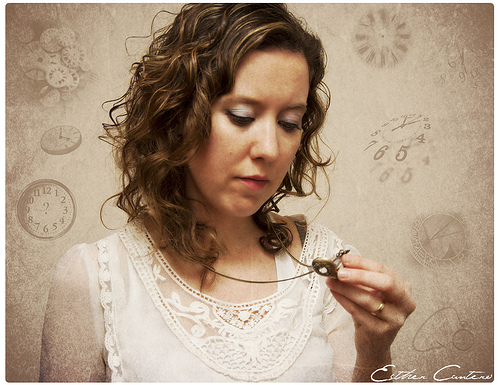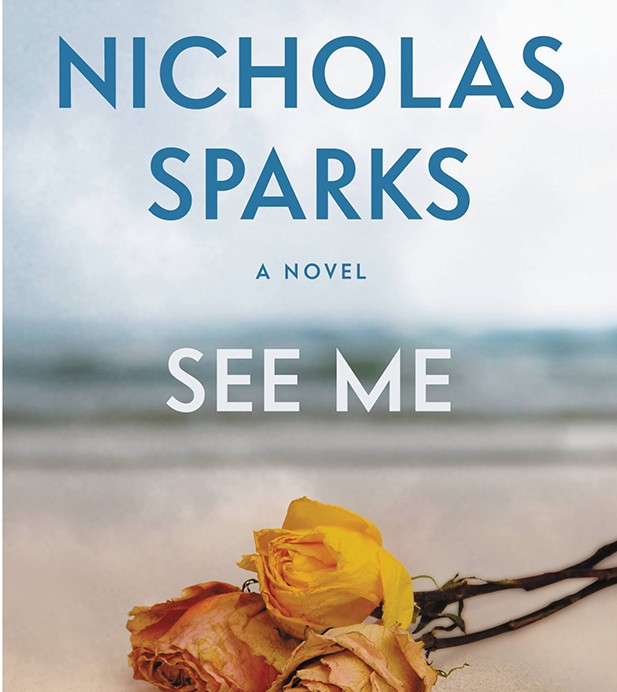Scene Structure: Scene Beginnings and Magic Ingredients
For this week’s Throwback Thursday, we’re looking at excerpts from past posts on Live Write Thrive that tie in with our exploration on scene structure.
From Don’t Go Nowhere Fast:
Scenes must have a point to them or they shouldn’t be in your novel. I’ll repeat that. Scenes must have a point to them or they shouldn’t be in your novel. You need to find your “moment” and build to it, and the first scene really needs a kicker of a moment to hook the reader. Too many scenes are poorly structured, but there’s really an easy way to look at them.
Each Scene Is a Mini Novel
There it is—the basic structure. If you think about each scene as a mini novel, you can plan them out accordingly. Each scene, like a novel, needs a beginning, middle, and end. A scene needs to have a point. It needs to build to a high moment, and then resolve in some way (although with a scene, you can leave the reader hanging.
Okay, a lot of writers do this at the end of their novels too, to make you run out and buy the next installment, but I find that a bit annoying. I want a novel to end satisfactorily and wrap up the story). What you then have with your novel is a string of mini novels that all work as nice, tidy capsules put together to paint a big picture.
Going Nowhere Fast
Here’s what literary agent Donald Maass says: “You would be surprised in how many middle scenes in how many manuscripts there seems to be no particular reason for a character to go somewhere, see someone, learn something, or avoid something.” (And at his week-long workshop he really grumbled about the plethora of scenes where two people are sitting around drinking tea.) You don’t want this to happen in your novel.
The Burden of the Beginning
Scene beginnings have a tremendous burden. In every opening paragraph of every scene you present to you reader you are making a promise or offering an invitation. You are promising to deliver—to entertain, impart enthralling information, move them emotionally. They have bought (or free-downloaded or borrowed) your book out of the hundreds of thousands of other novels available and are devoting their precious hours to reading your novel, so they are expecting that commitment on their part to pay off.
If you open a scene with a promise to deliver and you fail to deliver, they are not going to be happy. Avid fans of a particular author may stick with a boring scene, and maybe read even all the way to the end in hopes the novel will pull through and come out shining. But most readers are not that gracious and forgiving. So you want to make sure that you deliver. Here are a few points about scene beginnings:
- They don’t have to start at a “beginning,” such as the start of a day (too many characters waking up when the alarm clock goes off). The beginning can and often should be in the middle of something already happening.
- They need a hook. Not just your opening scene but every scene needs a hook to draw the reader in, chapter after chapter. If you start off with boring narrative, you’re not going to hook them.
- Each scene launch is a reintroduction. Ask—where did I last leave those characters and what were they doing? You need to make the passing of time clear, and if it’s been a few scenes since we’ve seen those characters, you’ll need a bit of a reminder in the beginning of the scene to connect to that last moment.
- Just as with the first scene in your novel, you want to get your POV character into the scene ASAP (and in real time). The points that apply to your book’s opening scene mostly apply to every scene.
- Start an action without explaining anything.
- Give a nod to setting (a nod, not a treatise).
From Fiction’s Magic Ingredient: The Scene (by Jordan Rosenfeld):
Scenes—those little capsules of action, information, and setting, are more than just a dull little way to practice “show don’t tell” in your writing. There’s a reason I refer to them as “fiction’s magic ingredient” when I teach: without scenes all you have is a lot of throat-clearing narrative, characters ruminating, and fancy words that gaze back adoringly at themselves like Narcissus of the Greek myths.
Even the prettiest sentences won’t make a story without the solid structure of one good scene after another. So here’s my shorthand for what scene writing really does: you create a stylized, “sexier” simulacrum of real life that readers experience as unfolding in “real time.” So let me break down what I just said here:
Stylized
Penning reality exactly as you find it is called reporting—leave that to newspapers. Fiction is a stylized reality. And, contrary to the idea of truth telling, so is memoir. You choose events, situations, people, and language toward a crafted outcome—keeping a story and character arc in mind, tension alive on the page, and your themes clear in your imagery and language.
By the time you reach final draft stage, the outcome you had in mind must be evident to your readers (first drafts are the place to discover, uncover, and explore what that outcome is. Later drafts are where you pare, perfect, and polish). Your goal is to shape a set of ingredients to have a certain kind of effect, to deliver an experience, not a dull, mundane reality.
In delivering an experience, you also want to consider your word choices (avoid clichés and hyperbole), your characters (or narrator), and the world(s) they inhabit—you want your writing to shine with its own unique spirit, to be unlike anyone else’s. And it’s through scenes that you do this.
Sexier
Fiction should be “sexier” than reality. In fiction you leave the majority of tooth brushing, flatulence, bill paying, and the micro-minutia (turning door knobs, walking across rooms, and getting in and out of chairs) by the wayside. This is not to say that real life doesn’t factor in for your characters—it does. And for the memoir writer even more so, but only in appropriate glimpses. The rest of your scenes should be reserved for relevant or “significant” actions.
These actions can be character-significant, that is to say, they deepen our understanding of a character. Or they can be plot-significant; they drive your plot forward. Even for the memoir writers among us, who traffic in reality, the reality you choose to share on the page must be the “best of” or “greatest hits” version of reality—reality sharpened and honed to a high polish to drive toward a powerful understanding.
Simulacrum
Your task, then, when writing scenes, is to give your readers a “simulacrum” of real life—meaning “a likeness” that is sharper and more dramatic than the real thing. You want to create for your reader the sense that they are caught up in the center of action, tension, and emotional intensity (not to be confused with melodrama).
Write in Real Time
Or, as you’ve probably heard enough times to gag at the sound of this phrase: “Show, don’t’ tell.” Or, as I prefer to think of it: “Demonstrate, don’t lecture.” Readers participate emotionally with the written word when there are several main ingredients at work:
- Compelling, though “complex” memorable character(s).
- Detailed (though not over-the-top) visual setting (don’t get bogged down in describing your setting).
- Action: Movement, gestures, dialogue. Action happens when characters interact with the setting and each other. Refrain from passive action in which your protagonist is merely watching. Action also creates the “real time” portion. When there is movement, we experience a sense of “time passing.”
- Emotional dramas. Conflict. Consequences. Suspense. Tension. The potential for trouble or danger. This is how we come to care about the people in your story.
- Plot. A matrix of events, beginning with a significant situation that leads to further consequences. “Something new” is revealed to the reader in each scene, until some sort of climax and resolution results in character transformation. Plot is the “why”—the reason for your story’s existence. Without this engine driving us forward, all we have are lovely little vignettes but no sense of a guided experience, crafted for a reader’s pleasure and understanding.
Scenes Require a Beginning, Middle, and End
Just like a story itself, scenes themselves have a loose “beginning, middle, and end” construction. Many of us write scenes intuitively and often don’t quite know if we’re done, or if we “did enough” in the course of a scene. Therefore, you should have an intention or purpose for each scene.
Something plot-related should happen to your character in every scene that you can begin, complicate, and then end temporarily until the next scene.
- Beginnings (which I also like to call “launches”) should throw a lasso around the reader’s waist and yank her right into the scene. Skip explanations. If you can teach yourself NOT TO EXPLAIN to your reader—not to drop into backstory and justifications—you will already have a huge foot forward in writing scenes. Open scenes “in media res”—right in the middle of actions and situations.
- Middles are where conflict and drama ought to keep on happening. You don’t want to throw that lasso only to drag your reader into a puddle of stagnant water. The middle of a scene is where it only gets more complicated, interesting or tense.
- Endings of scenes stick in the reader’s mind, and also compel further reading. You never want your reader to feel as though they can stop reading! An ending is, therefore, merely a pause. But it might be a pause in which a character is hanging off a cliff edge, waiting for rescue. You are pausing, but not “comfortably.”
So now you are armed with the knowledge of a scene’s purpose (stylized, sexier simulacrum of real life that creates a sense of real time passing). You know its ingredients (Characters, action, setting, conflict/drama, plot—something “new” revealed to the reader that relates to the original situation). You have an idea on how to structure them (lasso of a beginning, complicated middle, cliffhanger endings). What are you waiting for? Make a scene. (Get Jordan’s terrific book Make a Scene here!)
If you’re interested in more about scene structure, be sure to subscribe to Live Write Thrive so you don’t miss the posts. Mondays we’re going deep into scene structure, and Wednesdays we’re looking at first pages of great novels to see why they work. Join us!












This is one of the best articles on writing that I’ve read in a long time. Thank you!